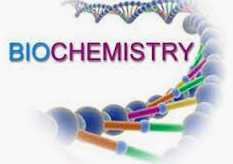ATP Synthesis and Fatty Acid Oxidation Multiple Choice Questions :-
1. Membrane potential and the proton gradient
A. are both required to make ATP
B. are sufficient, separately, to make ATP from ADP + Pi;
C. reinforce one another when respiratory inhibitors are present
D. cancel one another when uncouplers are present
Answer: A
2. The irreversibility of the thiokinase reactions (formation of initial acyl-CoA)
A. make this activation reaction the committed step on the pathway
B. is due to the subsequent hydrolysis of the product
C. applies only to even-chain fatty acids
D. both (a) and (b)
Answer: D
3. Long-chain fatty acids are oxidized step-wise in one carbon units starting from the
A. carboxyl end
B. aliphatic end
C. both (a) and (b)
D. none of these
Answer: A
4. How many molecules of acetyl-CoA are produced in oxidation of palmitic acid (C16), which involves seven rounds of oxidation?
A. 6
B. 7
C. 8
D. 9
Answer: C
5. The oxidation of methanol (wood alcohol) in human retina tissue leads directly to the formation of
A. formaldehyde
B. sugars
C. CO2
D. none of these
Answer: A
ATP Synthesis and Fatty Acid Oxidation Objective Questions with Answers
6. The maximum energy per gram on oxidization is yielded from
A. fat
B. protein
C. glycogen
D. starch
Answer: A
7. The oxidation of methanol (wood alcohol) in human retina tissue indirectly leads to
A. pressure builds up
B. colour blindness
C. blindness
D. all of these
Answer: C
8. Each cycle of ß-oxidation produces
A. 1 FADH2, 1 NAD+, and 1 acetyl-CoA
B. 1 FADH2, 1 NADH and 1 acetyl-CoA
C. 1 FADH2, 1 NADH and 2 CO2 molecules
D. 1 FAD, 1 NAD+ and 2 CO2 molecules
Answer: B
9. The three identical b subunits of the F1, complex during ATP synthesis have
A. different affinities for ATP but not for ADP
B. different affinities for ADP but not for ATP
C. different affinities for ATP and for ADP
D. similar affinities for ADP and ATP
Answer: C
10. Where the acyl-CoA formed in the cytosol is transported for oxidation?
A. Mitochondrial matrix
B. Microsomes
C. Endoplasmic reticulum
D. Remains in cytosol
Answer: A

11. The transport of acyl-CoA for oxidation using a shuttle involves formation of the intermediate
A. 3 acetyl-CoA
B. Acyl-coenzyme A
C. acyl-carnitine
D. None of these
Answer: C